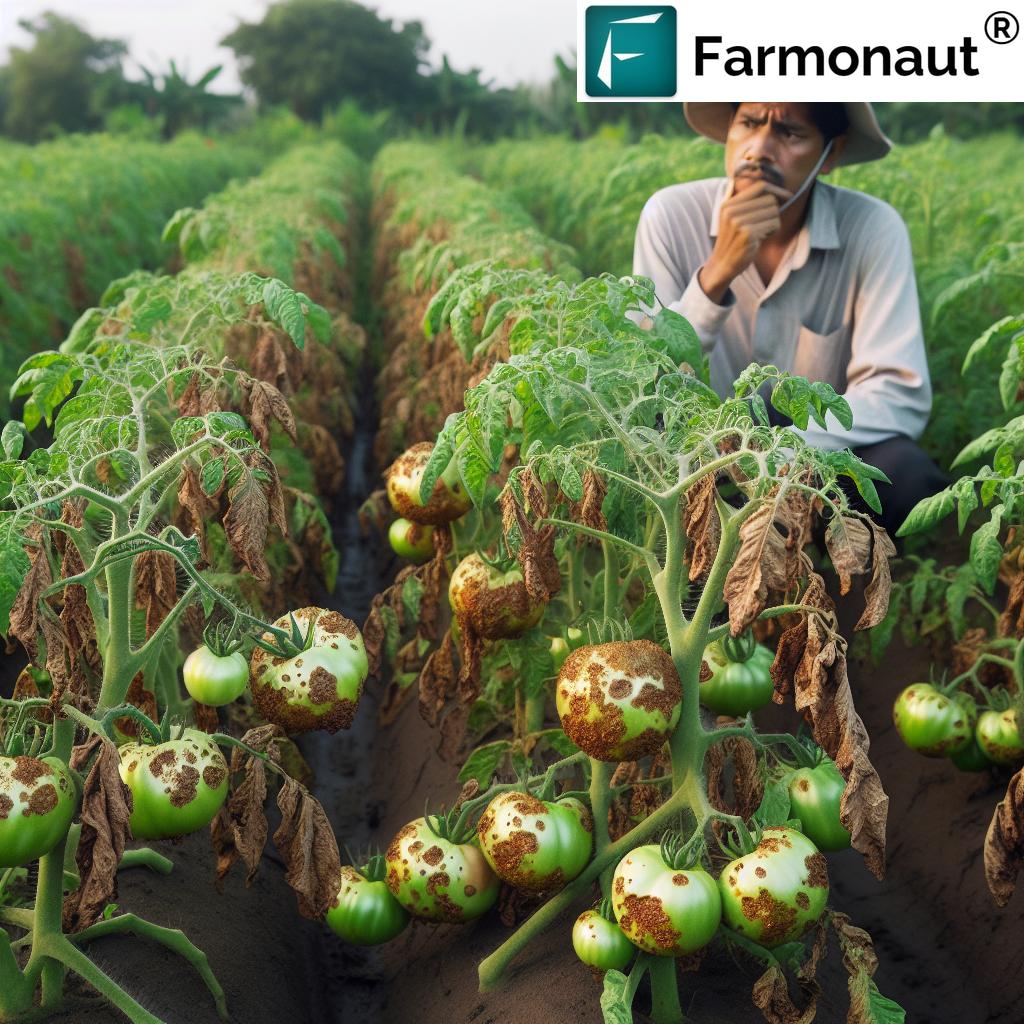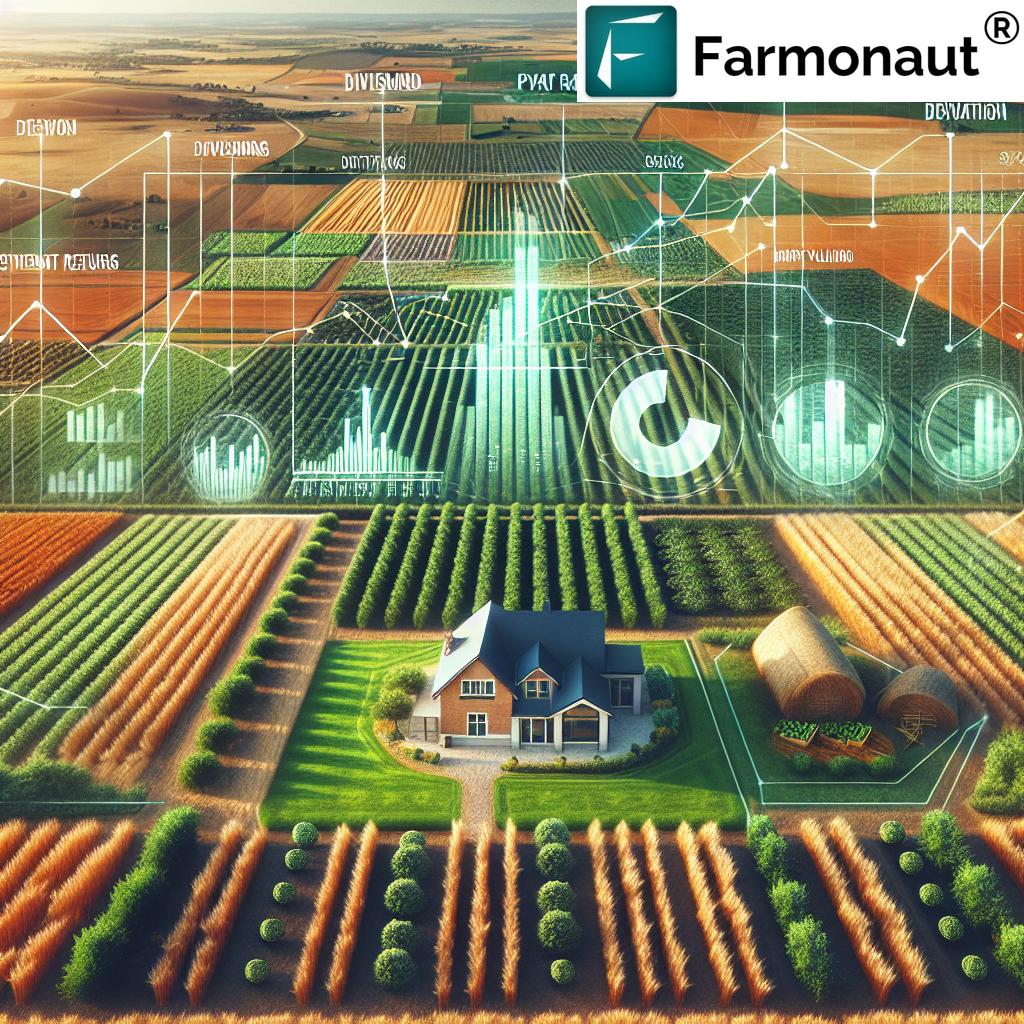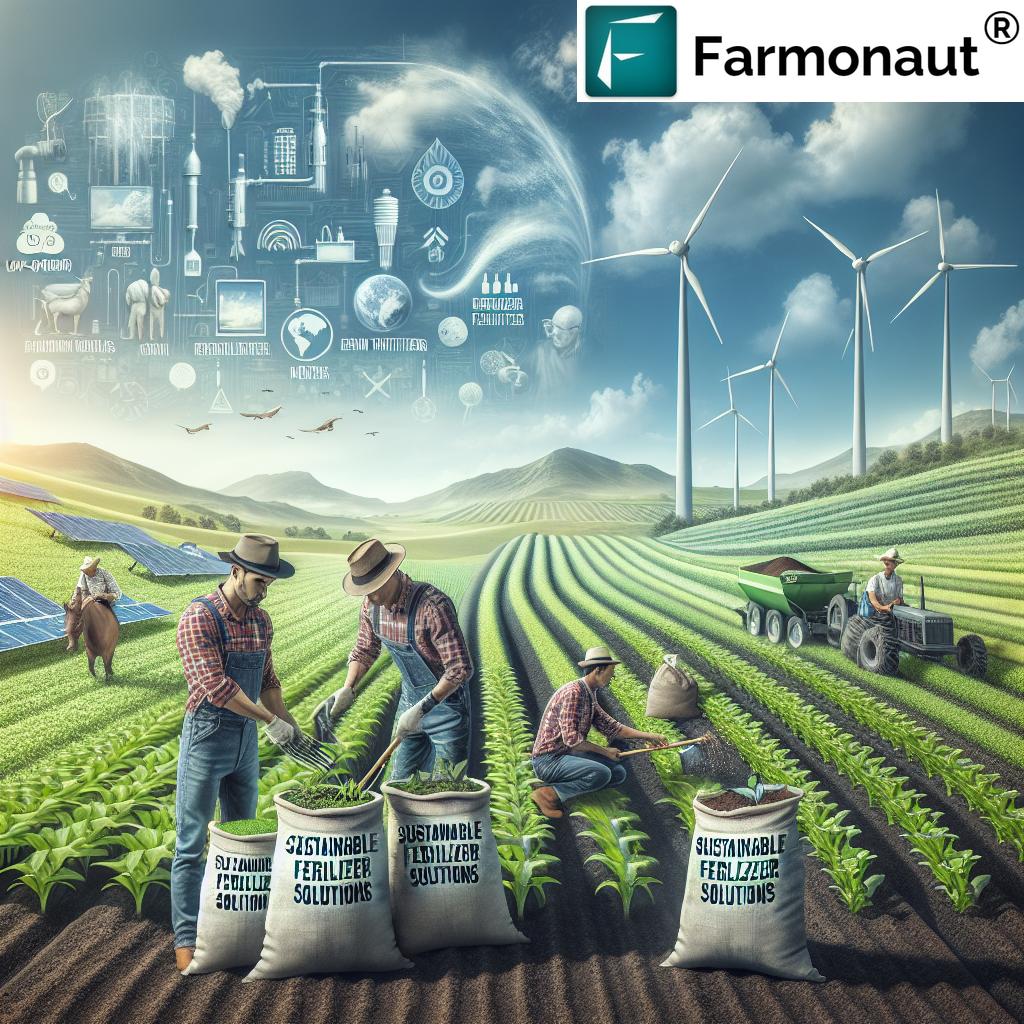Carbon Drawdown Collective: Top 5 Farming Solutions 2025
“Regenerative farming can sequester up to 1.2 gigatons of carbon annually, boosting global climate resilience by 2025.”
- Introduction: The Carbon Drawdown Collective’s Role in Agriculture 2025
- Understanding Carbon Drawdown in Agriculture
- Carbon Drawdown Collective: Top 5 Farming Solutions for 2025
- Comparison Table of Top 5 Carbon Drawdown Farming Solutions (2025)
- Beyond Carbon: Multifaceted Benefits of Regenerative Agriculture
- Innovative Monitoring and Carbon Solutions: Farmonaut’s Role
- Challenges, Barriers, and Moving Forward
- Frequently Asked Questions: Carbon Drawdown Collective & Regenerative Agriculture
- Conclusion: Cultivating Resilience and a Sustainable Future
Introduction: The Carbon Drawdown Collective’s Role in Agriculture 2025
As the world confronts escalating climate challenges, it is imperative to adopt innovative approaches for environmental sustainability and food security. In 2025, the emergence of the carbon drawdown collective in agriculture signals a transformative movement—turning farms into engines of climate resilience and carbon sequestration.
This collective represents a coalition of farmers, agronomists, scientists, policymakers, and businesses committed to removing and stabilizing atmospheric carbon (CO₂) through regenerative agricultural practices. Not only does this approach mitigate climate change, but it also enhances soil health, biodiversity, and yields—providing a critical solution as the world faces intensifying climate extremities.
2025 marks a pivotal year: technological advances, policy shifts, and increased awareness around carbon drawdown strategies are empowering stakeholders to scale effective practices worldwide. The following guide will explore the science, solutions, impacts, and future of the carbon drawdown collective, with an emphasis on the top 5 farming solutions driving change.
Understanding Carbon Drawdown in Agriculture
What is Carbon Drawdown?
Carbon drawdown refers to the net removal of CO₂ from the atmosphere through natural or engineered processes. In agriculture, it’s predominantly achieved by enhancing soil carbon sequestration and promoting biomass growth.
- Healthy soils rich in organic matter act as major carbon sinks, capturing carbon from plant photosynthesis and stabilizing it underground.
- Unfortunately, decades of intensive farming, deforestation, and land degradation have depleted global soil carbon stocks, releasing vast amounts of CO₂ and undermining fertility and food security.
The carbon drawdown collective is reversing this trend with science-based, regenerative methods.
Why is Soil Carbon So Critical?
Soil carbon is a key indicator of soil health, agricultural sustainability, biodiversity, and ecosystem resilience.
- Soils hold nearly three times more carbon than the atmosphere.
- Depleted soils not only contribute to atmospheric CO₂ levels but also lose their ability to retain water, nutrients, and support healthy crops.
The Regenerative Movement: Re-Building Soil for Climate and Food Security
The carbon drawdown collective leverages regenerative agriculture—an adaptive system of farming practices aimed at restoring ecosystem functions, increasing carbon stocks, and enhancing biodiversity. By adopting a portfolio of innovative approaches, the collective is actively sequestering atmospheric dioxide in soils and plants.
“Top 5 carbon drawdown methods improve soil organic matter by 15%, significantly enhancing farmland sustainability.”
Carbon Drawdown Collective: Top 5 Farming Solutions for 2025
In 2025, the collective approach has converged around five key regenerative strategies—each selected for their measurable impact on carbon drawdown, soil health, climate resilience, and overall food system sustainability.
- Cover Cropping & Crop Diversification
- Reduced or No-Till Farming
- Agroforestry Systems
- Managed Grazing
- Soil Amendments: Organic Matter, Compost & Biochar
1. Cover Cropping & Crop Diversification
Cover cropping involves planting non-cash crops between harvests to cover and protect the soil—minimizing erosion, suppressing weeds and pests, and enhancing organic matter for deep carbon storage. Diversification—growing multiple crop species—further reduces pest pressures, supports beneficial microbial communities, and improves overall ecosystem resilience.
- Increases organic carbon accumulation by encouraging continuous photosynthesis.
- Protects soil from erosion and degradation.
- Facilitates deeper soil carbon storage and supports key microbial ecosystems.
These methods are fundamental for boosting soil health, supporting climate-resilient farming, and promoting biodiversity.
2. Reduced or No-Till Farming
Decades of intensive, mechanized tillage have disrupted soil structure and released stored carbon. Reduced or no-till practices, promoted by the carbon drawdown collective, actively minimize disturbance and help to stabilize soil carbon stocks.
- Preserves soil structure and microbial communities vital for organic matter accumulation.
- Reduces carbon oxidation and loss by keeping carbon stored underground.
- Improves water retention and reduces soil erosion—a key for climate resilience.
3. Agroforestry Systems
Agroforestry—the integration of trees with crops or livestock—maximizes above- and below-ground carbon sequestration, while transforming farmland into more complex, climate-adapted ecosystems.
- Trees sequester large amounts of carbon in their biomass, roots, and associated soil zones.
- Enhances microclimate regulation, increases biodiversity, and provides habitat for beneficial species.
- Improves drought tolerance and offers diversified income streams (fruit, timber, fodder).
4. Managed Grazing (Regenerative Grazing Systems)
Traditional overgrazing leads to land degradation and carbon loss. Managed, rotational grazing increases root carbon accumulation and improves pasture ecosystem function.
- Optimizes pasture plant growth, resulting in more carbon inputs from roots and photosynthesis.
- Enhances soil organic matter and water retention.
- Reduces bare soil and supports biodiversity by mimicking natural grazer patterns.
Satellite-based resource management, such as ours at Farmonaut, allows farmers to track grazing intensity and optimize rotation timing, maximizing both carbon drawdown and productivity.
5. Soil Amendments: Introducing Organic Matter, Compost, and Biochar
Adding organic matter—such as compost, manure, and biochar—to soils is a high-impact, immediate carbon drawdown strategy.
- Biochar (charred organic residues) is highly stable and locks carbon in soils for centuries.
- Compost amendments provide nutrients and fuel beneficial soil microbial communities, accelerating carbon stabilization.
- Organic inputs improve nutrient cycling, soil structure, and help reverse degradation.
Deployment of these soil amendment practices sets the foundation for robust, future-proofed agricultural systems.
Comparison Table of Top 5 Carbon Drawdown Farming Solutions (2025)
| Solution Name | Main Practice | Estimated Annual Carbon Sequestration (tons CO₂/hectare) | Impact on Soil Health | Climate Resilience Benefits | Implementation Difficulty |
|---|---|---|---|---|---|
| Cover Cropping & Diversification | Cover Cropping, Mixing Plant Species | 1.5 – 3.0 | High (boosts organic matter, reduces erosion) | Improved drought resistance, reduced pest/disease risk | Easy–Moderate |
| No-Till / Reduced-Till | Minimized Soil Disturbance | 1.0 – 2.0 | High (preserves soil structure, enhances microbiome) | Erosion control, water retention | Moderate |
| Agroforestry | Integrating Trees with Crops/Livestock | 2.0 – 6.0 | High (deep roots, increased organic matter) | Drought tolerance, microclimate regulation | Challenging |
| Managed Grazing | Rotational Grazing Systems | 1.5 – 2.5 | Moderate–High (improves organic content) | Soil health, ecosystem diversity | Moderate |
| Soil Amendments | Compost, Manure, Biochar Addition | 1.0 – 4.0 | High (enriches soil, supports microbes) | Improved fertility and stress tolerance | Easy–Moderate |
Beyond Carbon: Multifaceted Benefits of Regenerative Agriculture
Implementing the top five carbon drawdown solutions delivers wide-reaching benefits for farmers, communities, food systems, and the climate:
- Improved Soil Health: Increases in soil organic matter unlock nutrient cycling, enhances water retention, and improves fertility—critical for food security.
- Enhanced Climate Resilience: Resilient soils boost drought tolerance, buffer temperature extremes, and reduce crop losses from weather shocks.
- Greater Biodiversity: Diverse crops, trees, and managed pastures support beneficial organisms, pollinators, and integrated pest management strategies.
- Reduced Input Costs: Healthier soils need fewer synthetic fertilizers and pesticides, improving farm profitability and sustainability.
- New Revenue Streams: Verified carbon drawdown can provide income via carbon markets.
- Environmental Co-Benefits: These regenerative practices improve downstream water quality, reduce dust storms, and increase natural capital.
Innovative Monitoring and Carbon Solutions: Farmonaut’s Role
As advanced satellite technology continues to reshape agriculture in 2025, our team at Farmonaut is committed to supporting farmers, businesses, and governments in accelerating carbon drawdown and achieving sustainable food system goals.
- Satellite-Based Monitoring: We utilize multispectral satellite imagery to provide insights into crop health, soil carbon conditions, and erosion risk—enabling real-time, data-driven regenerative decisions.
- Blockchain-Based Traceability: Our blockchain solutions guarantee transparency regarding the origin of organic soil amendments and the carbon footprint of products, streamlining compliance and market access. Learn more about Farmonaut traceability here.
- Carbon Footprinting: Through satellite-derived analytics, we empower agricultural stakeholders to quantify, monitor, and report farm carbon balances, positioning them to benefit from expanding carbon markets. Measure your farm’s carbon footprint with Farmonaut’s cost-effective solutions.
- Real-Time Environmental Tracking: From drought detection to biomass growth analysis, our Jeevn AI advisory system offers customized advice for maximized soil health and sustainable yields.
- Fleet, Resource & Loan Management: We support logistics, insurance, and loan verification to ensure climate-smart regenerative farming is economically viable and low-risk for food producers everywhere. See how satellite-based verification accelerates agricultural loans & insurance.
Developers: Integrate satellite-powered monitoring and analytics via the Farmonaut API.
Explore our API here | API Developer Documentation
Subscription Options:
Challenges, Barriers, and Moving Forward
While the potential of regenerative, carbon drawdown agriculture is significant, key challenges persist in 2025:
- Measurement and Verification: Validating changes in soil carbon stocks requires precise, scalable monitoring systems. Recent advances in satellite technology, like those offered by Farmonaut, are making remote, economically viable carbon accounting a reality.
- Economic Barriers for Farmers: Transitioning to regenerative systems involves risks and upfront investments. Access to financing, reliable data, and carbon credit schemes are crucial. At Farmonaut, our solutions help reduce risk for both producers and lenders by supplying actionable, transparent field data.
- Balancing Food Security and Carbon Goals: Optimizing land both for high yields and climate goals requires context-specific adaptive management strategies.
- Policy and Incentive Gaps: Governments and international bodies are ramping up policy frameworks, but strong market mechanisms and educational programs are required for scaling these practices worldwide.
- Knowledge Sharing and Training: For the collective to achieve its global mission, it is imperative farmers have the support and resources to adopt, track, and succeed with new regenerative practices.
Nevertheless, the carbon drawdown collective continues to advance collaboration, transparency, and innovation, bridging research and real-world application.
Frequently Asked Questions: Carbon Drawdown Collective & Regenerative Agriculture
What is the Carbon Drawdown Collective?
The carbon drawdown collective is a coalition of agricultural stakeholders dedicated to using innovative regenerative practices to capture and sequester atmospheric carbon dioxide in soils, plants, and biomass, supporting global climate, food, and environmental goals.
How do regenerative practices differ from conventional agriculture?
Regenerative agriculture emphasizes building soil organic matter, increasing biodiversity, and creating climate-resilient systems—unlike conventional models that often depend on intensive tilling, monocultures, and heavy chemical inputs.
Are these carbon drawdown methods suitable for all farms?
Most methods can be tailored to different scales, climates, and crops. Their success depends on adaptive management, knowledge support, and, increasingly, technology-assisted monitoring and verification.
How can farmers access new revenue from carbon markets?
By implementing and verifying drawdown practices, farmers can sell carbon credits. Reliable, satellite-powered carbon accounting systems, like those available through Farmonaut, provide the documentation needed for entering carbon markets.
What tools are available for monitoring soil health and carbon stocks?
Remote sensing platforms, such as Farmonaut’s satellite-based monitoring apps and APIs, offer real-time soil, crop, and carbon status—helping farmers make data-driven decisions and quantify the benefits of regenerative methods.
Can regenerative agriculture really reverse land degradation?
When implemented at scale, regenerative practices restore organic matter, support ecosystem functions, and reverse degradation—improving yields and climate resilience for the long-term.
Conclusion: Cultivating Resilience and a Sustainable Future
The carbon drawdown collective in agriculture embodies a hopeful, science-driven response to the world’s most urgent climate, food security, and land sustainability challenges. By transforming traditional farming into a climate-smart solution, the collective leverages regenerative practices—such as cover cropping, no-till farming, agroforestry, managed grazing, and organic amendment—to rebuild carbon stocks and ecosystem health.
As new technologies like satellite remote sensing, AI advisory systems, and blockchain-based traceability expand, tracking the benefits and scaling carbon solutions globally has never been more accessible or imperative.
At Farmonaut, we are dedicated to enabling every stakeholder—farmers, businesses, and policymakers—to access affordable, real-time satellite-powered insights and tools for transforming agriculture into the driver of sustainability and prosperity in 2025 and beyond.
Join the movement for a healthy, resilient, and climate-smart future for agriculture!











